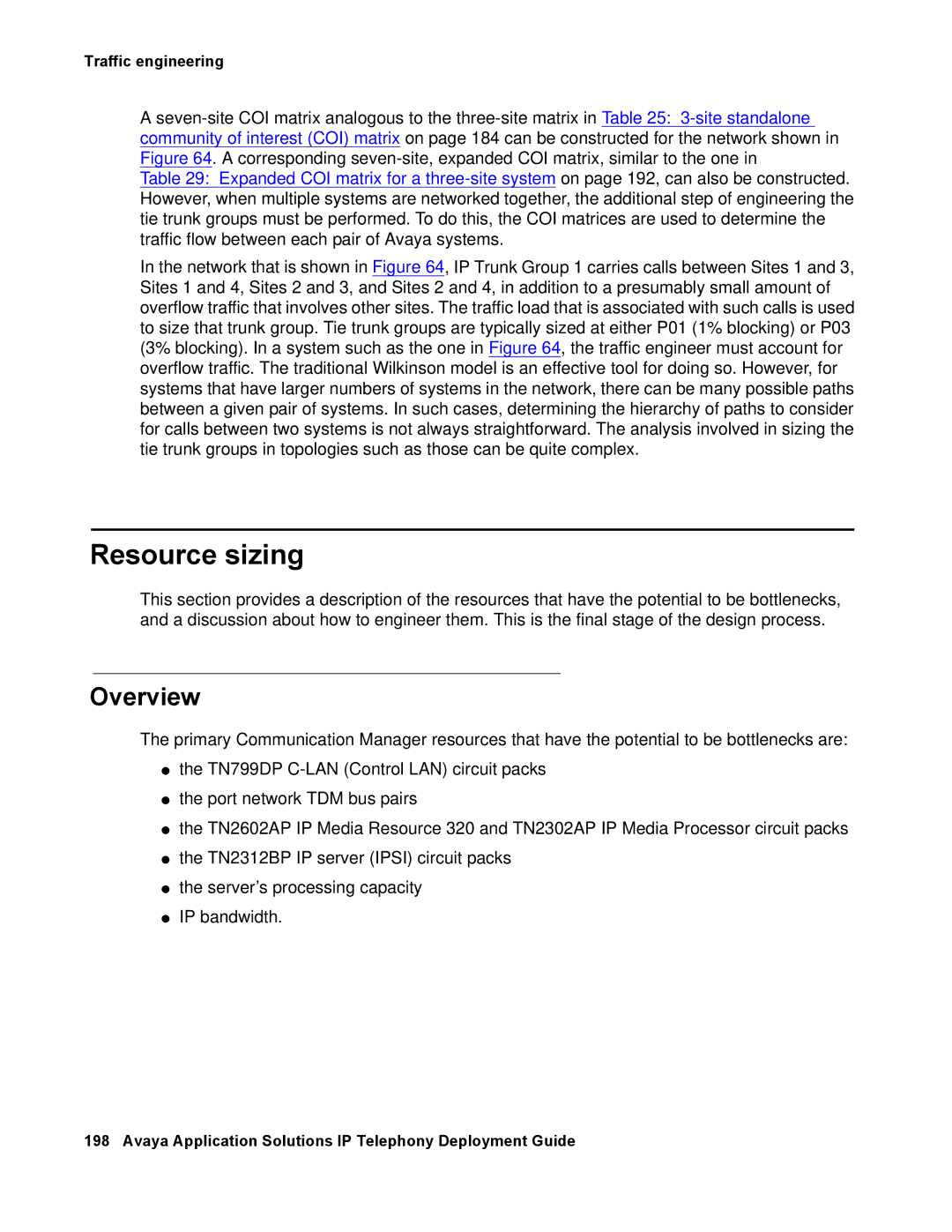
Traffic engineering
A
Table 29: Expanded COI matrix for a
In the network that is shown in Figure 64, IP Trunk Group 1 carries calls between Sites 1 and 3, Sites 1 and 4, Sites 2 and 3, and Sites 2 and 4, in addition to a presumably small amount of overflow traffic that involves other sites. The traffic load that is associated with such calls is used to size that trunk group. Tie trunk groups are typically sized at either P01 (1% blocking) or P03 (3% blocking). In a system such as the one in Figure 64, the traffic engineer must account for overflow traffic. The traditional Wilkinson model is an effective tool for doing so. However, for systems that have larger numbers of systems in the network, there can be many possible paths between a given pair of systems. In such cases, determining the hierarchy of paths to consider for calls between two systems is not always straightforward. The analysis involved in sizing the tie trunk groups in topologies such as those can be quite complex.
Resource sizing
This section provides a description of the resources that have the potential to be bottlenecks, and a discussion about how to engineer them. This is the final stage of the design process.
Overview
The primary Communication Manager resources that have the potential to be bottlenecks are:
●the TN799DP
●the port network TDM bus pairs
●the TN2602AP IP Media Resource 320 and TN2302AP IP Media Processor circuit packs
●the TN2312BP IP server (IPSI) circuit packs
●the server’s processing capacity
●IP bandwidth.
